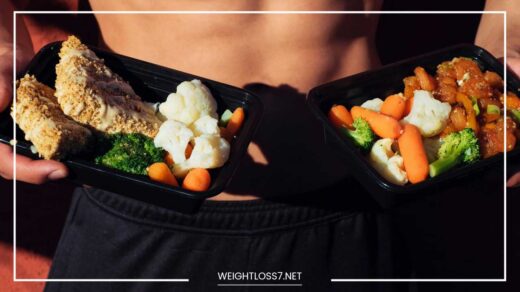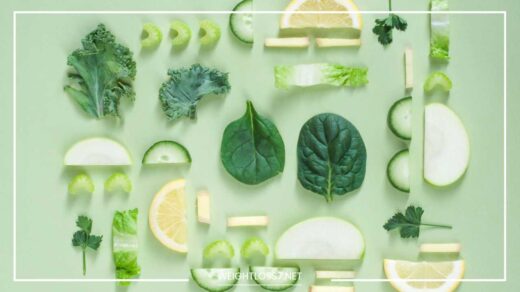Best Way to Lose Weight Fast

Lose Weight Fast
Shedding Pounds Safely: A Comprehensive Guide to Sustainable Weight Loss
In our fast-paced world, the quest for a quick and easy path to weight loss reigns supreme. Crash diets, fad cleanses, and extreme exercise routines bombard us with promises of dramatic results.
But the reality is, these approaches are often unsustainable and can even be detrimental to our health.
This blog post delves deeper, offering a roadmap to sustainable weight loss. We’ll explore effective strategies that not only help you shed pounds safely but also equip you with the tools to keep them off for good.
Let’s ditch the crash course mentality and embrace a long-term approach that prioritizes healthy habits and lasting lifestyle changes.
Why Focus on Sustainable Weight Loss?
Crash diets and extreme exercise programs may yield initial results, but they’re rarely sustainable. Here’s why prioritizing sustainable weight loss is key:
- Preserving Muscle Mass: Crash diets often lead to muscle loss, which not only affects your physique but also slows down your metabolism. Muscle burns more calories at rest, so preserving it is crucial for long-term weight management.
- Avoiding Nutrient Deficiencies: Restrictive diets often lack essential nutrients, leading to fatigue, headaches, and other health problems. A sustainable approach ensures you get the nutrients your body needs to thrive.
- Psychological Well-being: Crash diets and extreme exercise can create an unhealthy relationship with food and exercise. Sustainable weight loss focuses on developing positive habits that promote long-term well-being.
- Reduced Risk of Yo-Yo Dieting: The restrictive nature of crash diets often leads to yo-yo dieting, a cycle of weight loss followed by regain. Sustainable weight loss teaches you healthy habits you can maintain for life, preventing this pattern.
Building a Sustainable Foundation: Dietary Strategies for Weight Loss
Diet is a cornerstone of weight loss. Here are some key strategies to consider that go beyond mere calorie counting:
- Embrace Whole Foods: Fill your plate with unprocessed, whole foods like fruits, vegetables, whole grains, lean proteins, and healthy fats. These foods are packed with nutrients that keep you feeling full and provide your body with the building blocks it needs to function optimally.
- Fiber is Your Friend: Fiber promotes satiety and keeps you feeling fuller for longer. Include plenty of fiber-rich foods in your diet like fruits, vegetables, beans, lentils, and whole grains.
- Mindful Eating Practices: Develop a mindful approach to eating. Pay attention to hunger and fullness cues. Eat slowly, savor your food, and avoid distractions like television or screens while eating. This allows you to tune into your body’s natural signals and avoid overeating.
- Portion Control Matters: Use smaller plates and bowls to manage portion sizes. This simple trick can help you feel satisfied with less food.
- Beware of Liquid Calories: Sugary drinks, juices, and even certain flavored coffees can pack a significant calorie punch without providing any satiety. Opt for water, unsweetened tea, or black coffee to quench your thirst without sabotaging your weight loss efforts.
- The Power of Protein: Protein keeps you feeling full and helps you build muscle, which boosts your metabolism. Include protein sources like lean meats, fish, eggs, beans, tofu, and lentils in every meal or snack.
- Healthy Fats are Essential: Don’t shy away from healthy fats like those found in avocados, nuts, seeds, olive oil, and fatty fish. These fats are not only satiating but also crucial for hormone regulation and nutrient absorption.
- Plan and Prep: Plan your meals and snacks for the week to avoid unhealthy temptations when hunger strikes. Prepping healthy snacks and chopping vegetables in advance can help you make healthy choices more readily.
- Read Food Labels: Become a label-reading pro. Pay attention to serving sizes and calorie counts. Watch out for added sugars, unhealthy fats, and hidden sodium in processed foods.
- Cook More at Home: Preparing meals at home allows you to control ingredients and portion sizes. Experiment with healthy recipes that are both delicious and nutritious.
Finding Movement You Enjoy: Exercise for Sustainable Weight Loss
Exercise is an essential partner to diet in your weight loss journey. But the key to sustainability is finding activities you genuinely enjoy:
- Variety is Key: Don’t get stuck in a rut! Explore different exercise options like dancing, swimming, hiking, biking, team sports, yoga, or Pilates. Find activities that suit your interests and fitness level.
- Start Slow and Gradually Progress: If you’re new to exercise, begin with moderate-intensity workouts for 30 minutes most days of the week. Gradually increase the duration or intensity as your fitness improves. Listen to your body and take rest days when needed.
- Strength Training Matters: Don’t underestimate the power of strength training. Aim for strength training exercises that target all major muscle groups at least twice a week. Building muscle mass boosts your metabolism, helping you burn more calories even at rest. You can use bodyweight exercises, free weights, resistance bands, or weight machines.
Making Exercise a Habit:
- Find a Workout Buddy: Exercising with a friend or family member can make workouts more fun and hold you accountable.
- Schedule Your Workouts: Treat your workouts like important appointments and schedule them in your calendar. This helps you prioritize exercise and reduces the chances of skipping it.
- Track Your Progress: Monitoring your progress can be a great motivator. Track your workouts in a journal or app, or simply notice how your clothes fit differently or how much easier everyday activities become.
- Celebrate Non-Scale Victories: Weight loss isn’t just about the numbers on the scale. Celebrate your non-scale victories – increased energy levels, improved mood, better sleep, and increased strength.
Beyond Diet and Exercise: Habits for Long-Term Success
Sustainable weight loss goes beyond just diet and exercise. Here are some additional habits to cultivate for long-term success:
- Prioritize Sleep: Aim for 7-8 hours of quality sleep each night. When sleep-deprived, your body produces more ghrelin (the hunger hormone) and less leptin (the satiety hormone), making you hungrier and more prone to overeating.
- Manage Stress Effectively: Chronic stress can lead to weight gain. Find healthy ways to manage stress, such as yoga, meditation, deep breathing exercises, spending time in nature, or listening to calming music.
- Stay Hydrated: Drinking plenty of water throughout the day keeps you feeling full, improves digestion, and flushes out toxins. Aim for 8 glasses of water daily.
- Find a Support System: Surround yourself with people who support your weight loss goals. This could be a workout buddy, a weight loss accountability partner, a therapist, or a registered dietitian.
- Develop a Growth Mindset: View setbacks as learning experiences and opportunities to grow. Don’t get discouraged – recommit to your goals and keep moving forward.
Embrace the Journey: Building Sustainable Habits for Life
Remember, weight loss is a journey, not a destination. There will be ups and downs along the way. The key is to develop healthy habits you can maintain for life. Here are some additional tips:
- Focus on Progress, Not Perfection: Don’t get discouraged by occasional slip-ups. Everyone makes mistakes. The important thing is to get back on track and keep moving forward.
- Enjoy the Process: Find ways to make healthy eating and exercise enjoyable. Experiment with new recipes, explore different activities, and focus on how good you feel as your body gets stronger and healthier.
- Practice Self-Compassion: Be kind to yourself throughout the process. Celebrate your victories, big and small. Don’t engage in negative self-talk.
Getting Professional Help: When to Consider Consulting a Doctor or Registered Dietitian
While this guide provides valuable information, it’s not a substitute for professional guidance. Consider consulting a doctor or registered dietitian if:
- You have any underlying health conditions.
- You’re struggling to lose weight on your own.
- You’re unsure about creating a safe and effective weight loss plan.
- You need help managing a chronic health condition through diet and exercise.
A doctor or registered dietitian can provide personalized advice and support to help you reach your weight loss goals and improve your overall health.
Sample Meal Plans and Recipes for Sustainable Weight Loss
Disclaimer: These meal plans and recipes are for informational purposes only and are not a substitute for personalized dietary advice. Always consult with a doctor or registered dietitian before starting a new diet plan.
This section provides sample meal plans and recipes to get you started on your sustainable weight loss journey. Remember, variety is key! Feel free to adjust these plans based on your preferences and dietary needs.
Sample Meal Plan 1 (1500 Calories):
- Breakfast (400 calories): Greek yogurt with berries and a sprinkle of granola, or scrambled eggs with spinach and whole-wheat toast.
- Snack (150 calories): Apple slices with almond butter, or a handful of mixed nuts.
- Lunch (500 calories): Grilled chicken salad with mixed greens, avocado, and a light vinaigrette dressing, or lentil soup with a whole-wheat roll.
- Snack (150 calories): Baby carrots with hummus, or a small piece of fruit with low-fat cheese.
- Dinner (500 calories): Baked salmon with roasted vegetables and brown rice, or vegetarian chili with a side salad.
Sample Meal Plan 2 (1800 Calories):
- Breakfast (450 calories): Whole-wheat pancakes with fruit and a drizzle of maple syrup, or oatmeal with nuts and seeds.
- Snack (200 calories): Cottage cheese with sliced vegetables, or a protein smoothie made with Greek yogurt, fruit, and spinach.
- Lunch (600 calories): Turkey and avocado wrap on a whole-wheat tortilla with a side salad, or black bean burger on a whole-wheat bun with sweet potato fries.
- Snack (200 calories): Edamame pods, or a small cup of air-popped popcorn.
- Dinner (550 calories): Chicken stir-fry with brown rice and mixed vegetables, or lentil pasta with a light marinara sauce and a side salad.
Sample Recipes:
-
Greek Yogurt with Berries and Granola: Combine 1 cup of plain Greek yogurt with ½ cup of mixed berries and a ¼ cup of granola.
-
Scrambled Eggs with Spinach and Whole-Wheat Toast: Scramble 2 eggs with chopped spinach and spices. Serve on a slice of whole-wheat toast.
-
Lentil Soup: This hearty soup is packed with protein and fiber. Find a recipe online or in a healthy cookbook.
-
Grilled Chicken Salad: Grill a boneless, skinless chicken breast. Serve on a bed of mixed greens with sliced avocado, tomatoes, cucumbers, and a light vinaigrette dressing.
-
Baked Salmon with Roasted Vegetables: Season a salmon fillet with herbs and spices. Roast with your favorite vegetables like broccoli, asparagus, and red peppers. Serve with brown rice.
Remember: These are just a few examples. There are endless possibilities for healthy and delicious meals that support your weight loss goals. Explore cookbooks, healthy food websites, and recipe apps to find inspiration.
Final Word: Sustainable Weight Loss for a Healthier You
Sustainable weight loss is about more than just shedding pounds. It’s about creating a healthy lifestyle that promotes long-term well-being.
By incorporating the strategies outlined in this guide, you can develop healthy habits, improve your relationship with food and exercise, and achieve lasting weight loss success. Remember, this is a journey, and with dedication and self-compassion, you can create a healthier and happier you.

















